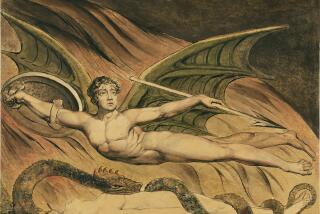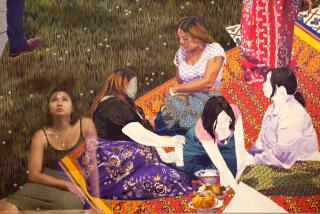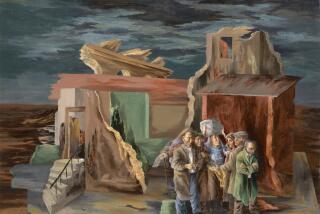Lee Mullican; Influential Surrealist Artist
Lee Mullican, the abstract “Dynaton” surrealist known for his homage to Native American art and painting with the edge of a palette knife, has died. He was 79.
Mullican, an art professor and curator of art exhibits at UCLA, died Tuesday in Santa Monica, art dealer Mark Selwyn said.
Paul Schimmel, chief curator of the Los Angeles Museum of Contemporary Art, which includes Mullican’s work in its permanent collection, said the artist “played a pivotal role in the period of transition between European modernism and American abstract expressionism” and helped “significantly and subtly change the course of 20th century art.”
Henry Hopkins of the UCLA Armand Hammer Museum added that Mullican helped make the West Coast a major center of modern American art because he chose to work in Southern California.
The Los Angeles County Museum of Art and the San Francisco Museum of Modern Art are among other institutions that own Mullican works.
“What I feel close to is abstracting,” Mullican told The Times in 1993. “In other words, I’m abstracting from, taking from nature. Taking from nature and funneling it through me. . . . From nature as I see it. I’m taking things from nature that are difficult to describe.”
Born in Chickasha, Okla., Mullican studied art at Abilene Christian College in Texas, the University of Oklahoma and the Kansas City Art Institute. He also informally examined modern art developments in New York and Europe by reading art magazines and observing Native American artists.
After military service in Hawaii during World War II, Mullican gravitated to San Francisco, where he befriended artist Wolfgang Paalen and painter Gordon Onslow Ford. Together they constituted the “Dynaton” school once described as “surrealism for the New World.”
The name “Dynaton” derived from the Greek word meaning “the possible” and from the title of the three artists’ landmark joint exhibition in 1951 in San Francisco.
“Mullican has earned the right to be taken seriously, but his work sits on an uncomfortable borderline between cultures,” former Times art critic William Wilson noted in 1985 during a Mullican exhibit at the Herbert Palmer Gallery here. “It tends to be thoughtful and a little fussy, rational qualities that mix oddly with the intuitive and magical demands of primitive art.”
Mullican is survived by his wife, Luchita, sons Matt and John, and two grandchildren.
More to Read
The biggest entertainment stories
Get our big stories about Hollywood, film, television, music, arts, culture and more right in your inbox as soon as they publish.
You may occasionally receive promotional content from the Los Angeles Times.










